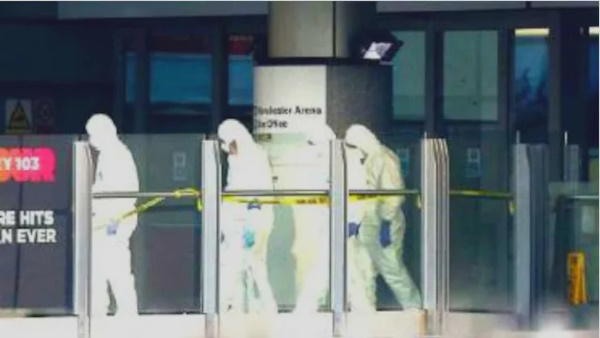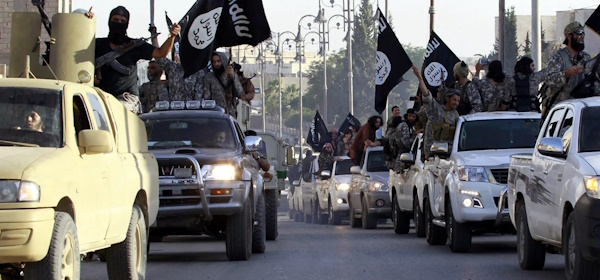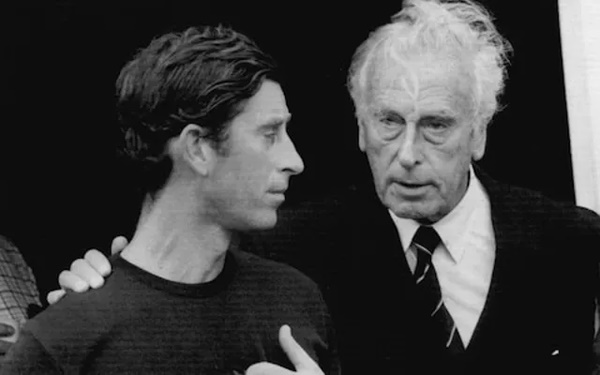The Manchester Arena False Flag — Richard D. Hall Deserves Our Support
The Manchester Arena False Flag
Richard D. Hall Deserves Our Support
by Iain Davis
March 1, 2024
Richard D. Hall is an independent investigative journalist and documentary film maker who has gone further than any other journalist to examine the evidence surrounding the alleged 2017 Manchester Arena bombing. If we look at the evidence, which is the only way to ascertain the truth, the Manchester Arena bombing was, in my view, a false flag.
The official Manchester Arena Bombing narrative asserts the following as “fact.”
On 22nd of May 2017, 22 people were killed by a 22 year old Islamist terrorist Salman Abedi who committed suicide when he detonated his TATP (triacetone triperoxide) backpack bomb at around 22.30. The bomb detonated just after Ariana Grande ended her set following the conclusion of her 22nd song.
Initially 59 people were reportedly injured, 38 directly by the bomb. By 2018 it was more than 800. The majority must have been injured in the stampede and this significantly increased number includes those psychologically traumatised by the event.
Among those initially injured were Ruth Murrell, Martin Hibbert and his daughter Eve. Martin was reportedly struck by 22 pieces of shrapnel.
The terrorist, Salman Abedi, was known to the intelligence agencies and was considered a to be among a tiny group of individuals, marked as a “subjects of interest” (SOI), who “merited further examination.” Despite being “of interest,” Abedi frequently flew back and forth between the Libya and the UK, passing numerous UK border check without issue.
This appeared to be the continuation of the “open door policy” the UK government had with the terrorist members of the Libyan Islamic Fighting Group (LIFG) which was linked to al Qaeda. In a subsequent 2018 parliamentary written statement, Alistair Burt MP wrote:
During the Libyan conflict in 2011 the British Government was in communication with a wide range of Libyans involved in the conflict against the Qaddafi regime forces. It is likely that this included former members of Libyan Islamic Fighting Group and 17 February Martyrs’ Brigade, as part of our broad engagement during this time.
Members of the LIFG Islamist terrorist group, including Salman Abedi’s father, Ramadan Abedi—also known as Abu Ismail—and their families were settled in the UK from where they could plan and coordinate attacks in Libya. Salman grew up in Fallowfield, Manchester among the UK-based Islamist terrorist community.
As a teenager, Salman joined terrorist operations in Libya during the school holidays. A very frequent flyer, he arrived back in the UK from Libya, via a stopover in Germany, just four days before the alleged attack. As usual, no one questioned him.
Richard D. Hall has “questioned” the official narrative of the Manchester Arena bombing in its entirety.
Following his extensive and diligent research, Hall subsequently published his book “Manchester: the Night of The Bang” in 2020. He released an accompanying film.
Hall reported, in both the book and the film, a significant body of evidence that strongly suggests the official account of the Manchester Arena bombing is false. He has continued to conduct his research and added further evidence since publication.
For me, that body of evidence is compelling and shows the official State narrative of the Manchester Arena bombing is not true. The evidence indicates it was a false flag operation conducted by the UK state or elements within the UK state. I reserve the right to maintain my opinion until someone can show me some evidence to change my mind.
There is no evidence in the official account that leads me to believe Manchester was not a false flag. The official account is not plausible and I have no reason to accept it.
Hall has clearly demonstrated, to anyone that actually familiarises themselves with his work, that the official narrative is constructed from a partial record of the evidence. Virtually none of the evidence reported by Hall has been discussed or examined in any depth by either the authorities or the legacy media (LM). Any conclusion that does not account for all of the evidence is questionable. A conclusion based upon an investigation that ignores or deliberately evades evidence is meaningless.
The Establishment simply insists you believe whatever it tells you about Manchester without discussing, or even acknowledging, the bulk of the evidence. Hall is the only named journalist to have reported the information otherwise excluded from public discourse. For doing so, he has been attacked by the entire UK legacy media and faces bankruptcy in the courts.
One of the reported victims of the Manchester Arena bang, Martin Hibbert, has lodged a civil claim against Hall alleging that Hall’s investigative journalism amounts to harassment and GDPR breaches. Hall has shown evidence that strongly suggests the BBC were instrumental in instigating the case against him.

In an interview aired on ITV’s Good Morning Britain (GMB), Martin Hibbert spoke about his relationship with Andy Burnham, the mayor of Manchester. Mr Hibbert stated that if he wins the case against Hall, he, Burnham and his legal team are seeking to use the ruling to push for the creation of a new criminal offence.
Hibbert and his supporters want to make it illegal to question any reported victim account of an alleged terrorist attack. If enacted, it will ensure that no investigative journalist can ever question State narratives about terror events. Once on the statute books, it is highly likely that the offence will be extended to prohibit the questioning of other State narratives, wherever it is claimed someone was harmed. Murder, for example.
At no stage did GMB question anything Mr Hibbert said. They noted that the case against Hall was ongoing, but then allowed Martin Hibbert to make a series of unchallenged, false claims about Hall. Thus, further jeopardising Hall’s defence.
The GMB interview appeared to contravene Sections 5 and 7 of the OFCOM Code. Some people have submitted complaints to OFCOM. An example of the kind of complaints raised can be read HERE. If you are satisfied that the interview breached OFCOM regulations, perhaps you might consider submitting something similar yourself.
The UK High Court of Justice has issued a summary judgment in Hall’s case. High Court Master Davison decided that all of the evidence we are about to discuss was “farcical” or “preposterous” and ruled it inadmissible. Hall cannot present key evidence in his own defence.
Journalism and its ability to question power is directly threatened by the civil action brought against Richard D. Hall. Yet virtually no legacy media nor independent media outlet, with a couple of notable exceptions, is seemingly willing to publish anything that broaches this issue or defends either Hall or his work.
A possible injunction could see all of Hall’s research and the evidence he has reported removed from the internet. His books will be burned. It seems obvious that the UK state is determined to silence Hall but, more importantly, to hide and destroy the evidence he has reported.
The UK government, the compliant legacy and many in the so-called independent media have reported a Manchester Arena “story,” primarily based upon witness testimony. The official narrative is largely anecdotal and there is a dearth of physical evidence corroborating any of it.
As Hall showed, the State’s relied upon witness testimonies are contradictory and many are not consistent with the authorities’ yarn.
For example, Hall reported the published witness testimonies of the 21 eyewitnesses who say they saw the explosion. Ten described a bright flash or orange light or fireball when it occurred and five described smoke. TATP, the explosive allegedly used, does not emit either light or smoke when it explodes.
At the subsequent public inquiry into the Manchester Arena bang—the Saunders Inquiry—paramedic Simon Butler testified that he “treated” survivors for more than three hours but added “I didn’t see a patient actively bleeding.”
Hall discovered and reported that the first people to respond to 22 dying and 38 seriously injured people in the City Room were Manchester Arena medical staff. To give you some sort of unpleasant mental image of what they supposedly faced—according to the official account—the blast was so immense that Salman Abedi’s dismembered head and torso were flung more than 160 feet through the air to land near the Victoria Station ticket stall.
Hall has provided photographic evidence—not shown at the inquiry—of the Manchester Arena medical team leaving the Arena, immediately after working in the bloodbath. They didn’t have any blood on them. Perhaps they had time to wash it off and get changed or perhaps they “didn’t see a patient actively bleeding” either.

Hall has scrutinised every single available image and CCTV frame offered as “official evidence” of what happened that night. He even created an online tool to enable anyone else to peruse the images. Which is highly recommended.
He reports, and I agree:
There are no CCTV images that show any deceased victim or seriously injured victim in the City Room or anywhere else in the Arena.
Absence of evidence is not evidence of absence but, following a major terrorist bombing that supposedly killed 22 people and directly injured at least 38 more, any reasonable person would expect to see some physical evidence that a bombing had, in fact, occurred. None, nada, zilch, showing anything remotely corroborative of the official account has ever been shown anywhere.
There is no publicly available, physical evidence of a large TATP bomb, packed with metal shrapnel, detonating in the City Room. To ignore this and maintain that the official story is beyond doubt, is utterly ridiculous.
The physical evidence reported by Hall has not been acknowledged by anyone who claims the Manchester Arena bombing happened as described by the authorities. It seems likely that it has been ignored because it completely contradicts and wholly undermines everything we are supposed to believe about the Manchester Arena bombing.
Perhaps the most absurd pieces of evidence analysed by Hall is the Nick Bickerstaff video. Widely reported by the legacy media, the selfie-video shows Bickerstaff, supposedly searching for his daughter, having just seen the devastation in the City Room.
Unlike the legacy media, Hall took the time to analyse and investigate the clip. He provided verifiable evidence that proved the Bickerstaff footage was filmed before the explosion occurred. In the video, Bickerstaff said there were people in the City Room who were “bashed to bits.” This clearly indicated that Bickerstaff was relaying foreknowledge of the alleged Manchester Arena bombing.

Hall interviewed John Barr. Barr was an eyewitness who was in the City Room within four minutes of the explosion. This was 40 minutes before the first paramedic arrived and the only medical first-responders on the scene at that time—according to the official account—were the Manchester Arena medical staff, who, apparently, weren’t bloodstained by their ordeal.
John Barr filmed the scene and posted it on social media. Barr possessed a documentary record of the physical evidence observable in the immediate aftermath of a major terrorist attack. Barr was not invited to testify at the subsequent inquiry and his footage was not entered into evidence or examined.
To be clear: the Barr footage captured the scene inside the Arena Foyer (City Room) less that four minutes after the alleged explosion.
We are told that a terrorist had just detonated a massive TATP suicide bomb that sprayed deadly shrapnel over a wide area, scything through a densely packed crowd. It killed 22 people and severely injured at least 38 more. Nearly all of those 60 people would still have been in the City Room when Barr shot the footage.
So let’s consider what we can see on the John Barr video, as reported by Richard D. Hall.
Of course, what we think we see and what we imagine we see is entirely subjective. But let me briefly describe what I don’t see.
I don’t see 22 people killed by a bomb. I don’t see 38 people seriously injured by a bomb. I do not see dismembered tissue nor anywhere near enough blood to corroborate the story we are given.
I don’t see any notable panic nor, indeed, any frenetic activity at all. I don’t see anyone attempting any kind of emergency medical procedure.
I don’t see “any” structural damage.

Now please allow me to say what I do see.
I see people stood around amiably chatting. I see entirely intact paper posters and flimsy merchandise stalls—supposedly located close to the epicenter of the blast—that have not sustained any damage at all. I see completely undamaged and fully operational lighting. I see intact glass panel doors. I see unmarked walls.
I see a Ruth Murrell, who supposedly just had a bolt blown through her right leg, walking with ease in high heels, without even a limping, bringing her full weight to bear on her right leg. I see Ruth’s jeans, without any damage, despite a shrapnel supposedly passing through them. I see what looks like some minor “bleeding” that I suspect is fake.
I see too few people lying on the ground and what appears to be some limited moulage. I see an event that looks practically identical to the fake mass shooting and suicide bombing that occurred in Manchester’s Old Trafford Shopping Center one year prior, almost precisely, to the alleged Manchester Arena bombing.
I see a simulation of a terrorist attack. I see a training exercise. I see crisis actors. I see a hoaxed false flag.

Were this the only evidence that Hall had reported it would be enough, in my view, to cast significant doubt on the official narrative. But this is just one tiny slither of the evidence he has tried to draw to public attention.
Taken from his latest video covering the court case, the claimant’s media statements and the alleged Manchester Arena bombing, let’s just consider a few more examples of the evidence Hall has unearthed.
Richard D. Hall reported:
Evidence in witness testimony [given to the Saunders Inquiry] from the emergency services suggests emergency services did not act in a normal fashion and were deliberately inhibited by their chains of command. British Transport Police were kept out of the City Room until after the blast [emergency response was concluded] despite it being standard practice for them to be there to help manage egress from the concert. Greater Manchester Police, who arrived 15 minutes after the blast, did not establish any chain of command with the senior officer at the scene throughout the emergency response period and did not declare a major incident. [. . .] [The whole police response] was isolated from any control outside [of the City Room].
As has been widely reported elsewhere, Hall also highlights the “bizarre” decision to direct Fire Service crews from their station located near the Arena to a rendezvous point two miles further away. Thus moving them three miles away from the building, where a bomb had supposedly exploded, and keeping them there for two hours. Apparently, they weren’t needed.
If that makes no sense, the ambulance response is mind-bending. Consider what we are told about the horrific scale of this alleged terrorist attack.
Hall reported:
North West Ambulance Service was only allowed to send three paramedics to attend a scene with 60+ alleged casualties, two of the paramedics arriving 44 minutes after the blast despite there being four more hazardous trained area paramedic on-site. Eight of the first trained people to respond at the scene—the Arena medical staff—were not interviewed by the public inquiry.
Hall reported the statements of key paramedics and doctors who attended the scene. Paddy Ennis, Dan Smith, Christopher Hargreaves, Joanne Hedges, Dr Edward Tunn and Helen Motram. All of them stated that it was not their role to treat any dying or injured people and they testified that they did not treat “any.”
Hall reported that Greater Manchester Police (GMP) inspector Mike Smith and British Transport Police (BTP) Constable Dale Allcock, testified that a member of the public reported seeing an Asian male—matching Abedi’s officially reported appearance on the night—place a rucksack in the City Room before running out of the Arena. This reported sighting was confirmed by Operational Firearms Commander Edward Richardson.
Hall has presented evidence that the Saunders inquiry entered incorrectly time-stamped still images into the public inquiry. The inquiry stated they were taken 1 second before the “blast” but Hall has convincingly shown it is highly likely they were taken 30 seconds prior to detonation. This apparent 30 second gap possibly indicates an attempt to hide what happened in the City Room in the immediate moments before the bang. Did the missing CCTV images show Abedi fleeing?
In short, there is no solid evidence supporting the official narrative of the alleged Manchester Arena Bombing. It is notable only for its absence. Richard D. Hall has investigated, collated and reported the hard, verifiable evidence that casts immense doubt on the official Manchester Arena “story.”
This brings us to the most contentious aspect of Hall’s findings. People allegedly died and many were injured. Clearly, Ruth Murrell’s account of the injuries she sustained is extremely dubious.
The evidence presented by Hall indicates that the Manchester Arena bombing was a false flag. Evidence, such as the John Barr video, also suggests the possibility that it was a simulated or “hoaxed” false flag. Thus, the potential seemingly exists that no one died and no one was injured in the City Room on 22nd May 2017.
Therefore, with the information he had already uncovered in hand, Hall set about investigating the claimed deaths and injuries. He did so knowing what an immense risk he was taking. Few journalists have the guts to even contemplate undertaking such an investigation.
I will not explore the perfectly plausible theories that Hall presented in his book potentially accounting for many of the deaths and the injuries. Suffice to say, in my view, the Manchester Arena terrorist attack was a hoax and the claimed deaths and injuries cannot simply be accepted as proven facts without further investigation.
But no one, and I mean no one, wants to hear that.
The notion that the state could fake such an attack is hard enough for most people to swallow. Although some awareness of the State’s long history of using false flag terror might help overcome this strain of cognitive dissonance. As would some knowledge of the crisis actor industry.
What people blankly refuse to consider is that the State would ever claim deaths and injuries happened when they either didn’t or transpired as a result of unrelated events. The State habitually lies to us about pretty much everything, so why people find this impossible to even contemplate is hard to say, though we can speculate.
Lives lost to terrorist attacks, especially children’s, have a significant emotional impact upon us. When the entire legacy media constantly reinforces the emotions elicited by those reported deaths, if convinced by this, we run the risk of basing our comprehension of politically significant terrorist attacks on nothing but emotion, rather than on the evidence.
It is the alleged deaths and injuries that renders questioning the event unthinkable for the vast majority. Reported deaths and injuries are essential if you are going to convince an entire nation that a large-scale terrorist attack struck a city like Manchester. Especially if you haven’t got any other evidence to substantiate your claim.
We know that the UK state has been actively involved in terrorism that killed civilians. It doesn’t care about our lives. Begging the question why bother with a hoaxed false flag? Why not use a real bomb?
Again, we can only speculate.
The hoaxed false flag inevitably draws researchers to conclude that the reported deaths didn’t happen. We have seen a slew of court cases, on both sides of the Atlantic, focus upon the highly emotive and controversial claim that no one died. As the public is wholeheartedly convinced that this is an egregious and despicable slur on the memories of those who perished, juries and benches are predisposed to find these researchers guilty of defamation or harassment. Based on their emotions, few would question such rulings.
This, in turn, supports the State’s assertion that measures need to be taken to stop the so-called “conspiracy theorists” making such outrageous claims and spreading supposed disinformation and “hatred.” The United Nations is using this claim as justification for its proposed global Cybercrimes Treaty. Once signed, every signatory nation will pass laws to stop the sharing of any information that “may have an adverse impact on States, enterprises and the well-being of individuals and society.”
Is the hoaxed false flag an effective honey trap? Is the intention to lure independent journalists and researchers into exposing apparently fake deaths and then capitalise on the resultant outrage, using the media, public opinion and the courts to seemingly legitimise laws to end free speech?
If people are genuinely killed that leaves grieving families who will never let go of seeking the truth. If they aren’t, if the participants have signed some sort of enforceable contract or have been coerced in some way, this is less likely.
For example, the families of the 9/11 victims are still pursuing the US government, not to examine alleged “failures” of intelligence, as is often the case, but to ascertain what actually happened.
It should be noted that some of the families of the Manchester Arena attack are also seeking answers. While there is no questioning of the event itself, many want to know more about the apparent intelligence failures.
In truth we don’t know why a hoax was evidently favoured for the Manchester Arena false flag. Investigating State crimes without being censored or prosecuted or worse, is extremely difficult and high risk. By its nature, the evidence is not easy to gather. Often, we are left with questions and not many answers.
But questions can be well informed and rooted in the evidence. In the case of Manchester, certainly the questions posed by Hall’s work are founded firmly upon the solid evidence he has reported.
Hall would be the first to admit he doesn’t have all the answers. His work is not beyond dispute and it should be critically evaluated. The only way to start doing that is to appraise yourself of it.
“Appeal to emotion” is both a logical fallacy and a propaganda technique. Our emotions are subjective feelings and do not constitute evidence. If we care about the truth we must pursue the evidence and nothing but the evidence. That is what Richard D. Hall has done.
We may not like his conclusions and they may not be entirely correct, but the evidence he has reported is more than enough to determine that the official account of the Manchester Arena bombing is false. A reported victim of the bombing is now pursuing Hall through the courts—supported by politicians, the legacy media and a very expensive legal team—with a view to establishing a law that could end any possibility of questioning State fabricated terror events or any State narrative relating to harm supposedly caused.
So powerful are our emotions that even so-called independent media journalists either can’t see beyond them or use “appeal to emotion” as if it were a rational argument.

In a recent podcast [go to 28:36] about Hall’s case and his Manchester work, independent radio host, Richie Allen, focused almost exclusively on the emotions surrounding the Manchester Bombing to largely discredit Hall’s work. Listening to the podcast is recommended because Allen neatly packaged the “appeal to emotion” propaganda, used by the legacy media to dissuade anyone from looking at the evidence Hall reported, in his podcast.
Saying that he hadn’t read Hall’s book and that he wasn’t overly familiar with his work, Allen nonetheless felt he was sufficiently well informed to pontificate on the evidence he presumably knew nothing about. He said Hall wasn’t a “real” journalist and stated that Hall didn’t have any evidence to back up his claims. Apparently, according to Allen, none of the evidence reported by Hall—discussed in this article—exists.
Richie Allen acknowledged many of the anomalies in the official narrative. He conceded that hoaxed false flags have happened before, he even mentioned the Nick Bickerstaff video. Allen said he was “at a loss” to understand it and that it was “one of the most bizarre” things he had ever reported. Had Allen read Hall’s analysis he might have been able to understand that the Bickerstaff video demonstrates foreknowledge of an alleged terrorist attack.
Allen offered an anecdote—told to him by a friend—about injured people being treated on the night as “evidence” that proved everything Hall has investigated and reported is baseless. He called Hall’s work “bollocks.”
When the bangs were heard, as shown in numerous TV reports, the crowd panicked and a stampede ensued. Thanks to Hall’s investigative journalism, this is is one of the reasons we can deduce that the Bickerstaff video was shot before the bang. The absence of the warning sirens heard in the Barr footage being another.
Thirty eight people were reportedly treated for injuries caused by a bomb. Many hundreds were reportedly treated for injuries that were not caused by a bomb.
Evidently, this hasn’t crossed Allen’s mind. He apparently assumes that all treated injuries were incurred as the direct result of bomb blast shrapnel.
Allen insisted that the victims were killed by a bomb because funerals were held which mourners attended. Of course, a funeral is not evidence demonstrating how, when or where a person died. Although Allen found it substantive.
Allen noted that many of the funerals had been covered extensively by the legacy media. He said that the people who attended the funerals believed they were saying their last goodbye to someone they cared about. While Hall has questioned some funeral attendees, he has never suggested that the majority of the mourners weren’t genuine, despite Allen telling his listeners that he did.
When his guest, Nick Kollestrom, highlighted the John Barr video (above), Allen speculated that it might show some sort of “hybrid event.” He proffered that there could have been both a real terrorist attack and a fake one which were, coincidentally, identical. Presumably, Ruth Murrell, a prominent “injured” survivor of the Manchester Arena bombing, just happened to attend both simultaneously—if Allen’s off the cuff hybrid theory is to be believed.
Ultimately, by focusing upon nothing but the emotions evoked by Hall’s claims, Allen effectively, indeed overtly, endorsed the High Court claim made against Hall. He stated, without offering any evidence, that Hall had, in some way, harassed the claimants, primarily it seems by questioning their personal accounts and seeking evidence to verify how, where and when they sustained their injuries.
Allen asked what was in it for the claimants in Hall’s case. What could they possibly gain from challenging Hall?
Richard D. Hall is being sued for £50K plus costs. Richie Allen is very well known “journalist” in the “independent media” which he frequently castigates as the “truther industrial complex.”
Richard D. Hall has uncovered the evidence that clearly indicates Manchester was a hoaxed false flag. If I am honest with myself, and if you also find his evidence compelling, then this leaves us with no choice but to agree with Hall that the reported deaths and injuries were not caused by a bomb that exploded in the Manchester Arena City Room at approximately 22.30 on the 22nd May 2017.
This is Hall’s specific allegation. He does not assert that no one died or that none of the claimed injuries are real. He suspects that some of the alleged deceased didn’t die and that some people’s injuries are fake. His only assertion, in this regard, is that no one died or sustained injuries as a direct result of Salman Abedi detonating a bomb in the Manchester Arena.
Like Hall, I don’t know what happened to those people. Hall has looked at the evidence and suggested some possible explanations. He has also presented more than enough high quality, verifiable evidence to question the State’s narrative and that includes questioning the stories we have been told about the alleged deaths and injuries. We have every right to ask those questions and to seek the answers.
Any personal offence caused is an unfortunate consequence of asking perfectly legitimate questions. Being offended is no reason to silence those questions.
Hall has requested that the claimants in his case provide the medical records that show where and when they sustained their injuries. He has asked the High Court to provide the moving CCTV footage that places the claimants in the Arena. The claimants say they have seen these images, as have their solicitor and an unnamed family liaison officer apparently. So all we have to “prove” these images exist is hearsay.
Reviewing this alleged medical and CCTV evidence in the High Court would categorically demonstrate that Hall’s theories about the claimants are wrong. You would imagine that the claimants would be eager to submit it themselves. Instead, the claimants have successfully obtained a summary judgement enabling them to avoid providing that evidence. It is not unreasonable to ask why they would do this?
Richard D. Hall’s Manchester book and all his films are freely available to the public from his Richplanet website. If you want to support Richard D. Hall’s work you can also buy a hard copy of his book from Amazon—or Richplanet. You can go to the Richplanet store and purchase more of his books and merchandise there. These sales enable Richard to earn a modest income from his work.
Richard D. Hall is one man fighting the entire UK State. Hall is appealing against the summary judgment and needs your financial help to press ahead with his ongoing legal battle. It is argumentation that Hall neither sought nor started. He is defending himself against attack.
Richard D. Hall deserves support from all who care about the truth.
Connect with Iain Davis: website | substack
Cover image credit: Ardfern
Tributes and memorials at St Ann’s Square,Manchester, England, re Manchester Arena bombing, May 2017
(creative commons license, vignette framing added)


